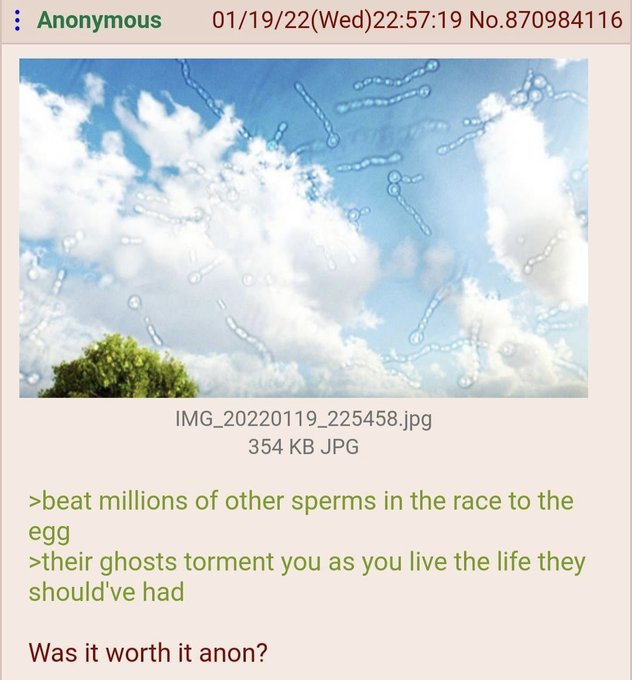this post was submitted on 29 Aug 2024
668 points (98.0% liked)
Greentext
5216 readers
1516 users here now
This is a place to share greentexts and witness the confounding life of Anon. If you're new to the Greentext community, think of it as a sort of zoo with Anon as the main attraction.
Be warned:
- Anon is often crazy.
- Anon is often depressed.
- Anon frequently shares thoughts that are immature, offensive, or incomprehensible.
If you find yourself getting angry (or god forbid, agreeing) with something Anon has said, you might be doing it wrong.
founded 1 year ago
MODERATORS
you are viewing a single comment's thread
view the rest of the comments
view the rest of the comments

Err, I don't think that's right. That's physically impossible. Only electrons are small enough to visualise molecules and atoms, which is why you need electron microscope to see those.
Whoa, my optometrist told me that's what they are and now I'm really disappointed.
Considering their shape and what you said about them being impossible to observe in visible light... I guess those branch-like pieces are cell organelle fragments instead?
Dang, and here I was excited to be seeing molecules.
You can see cells with the naked eye as well. Notably, eggs. Chicken eggs are also one cell. The largest cell is an ostrich egg.
There are amoebas that reach 5mm in length.
IIRC, there are limits on how big they can get based on how far RNA can travel after copying DNA.
Eggs are still bigger. I think you can actually see human eggs with the naked eye, as they are the width of a hair. Would probably need to be placed on a contrasting surface, though, and appear as a tiny speck
Don’t forget about Valonia ventricosa as well!